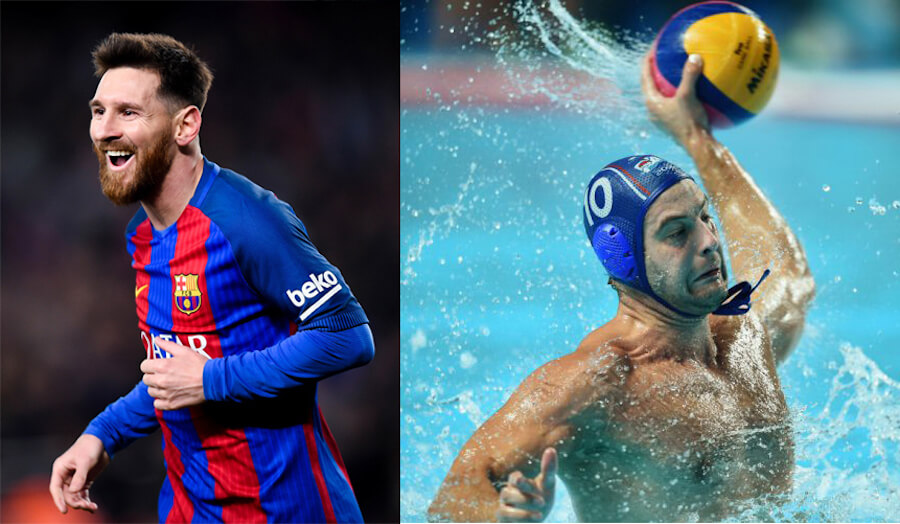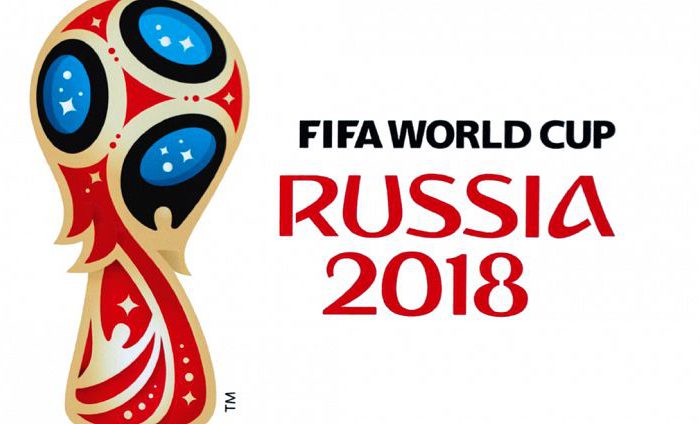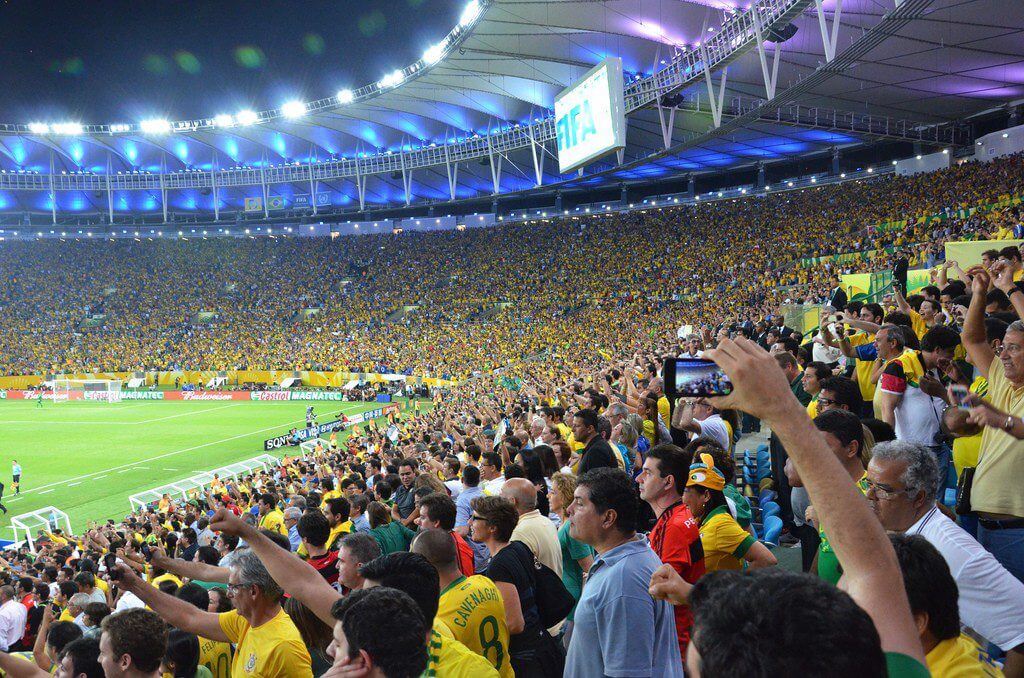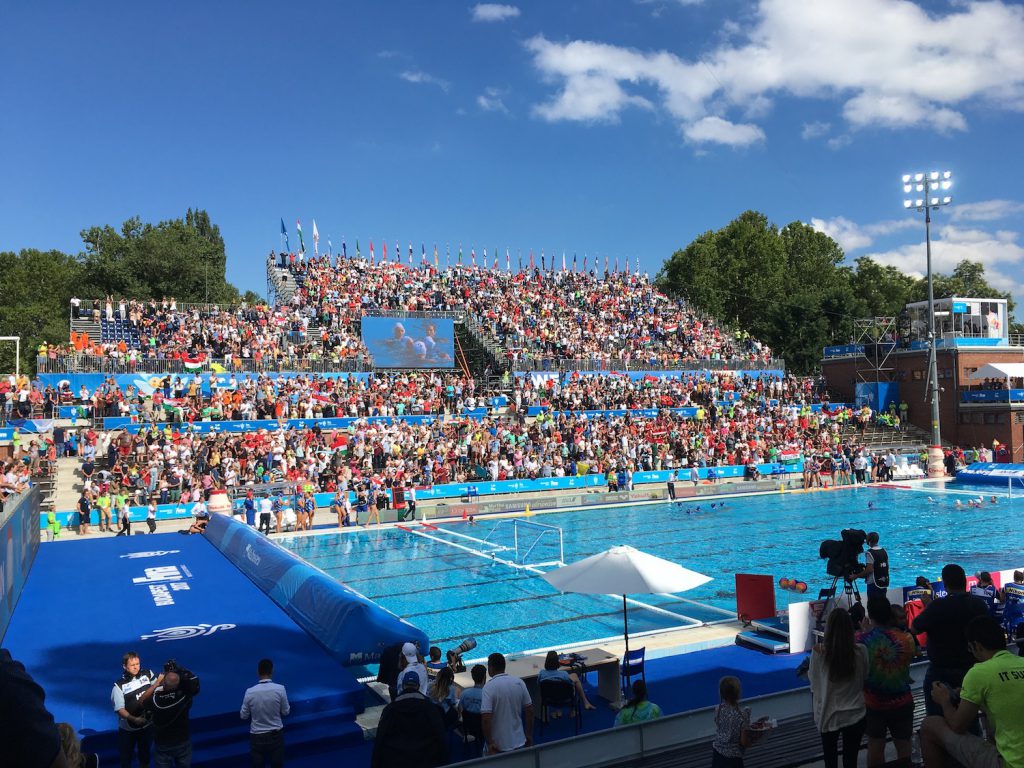Soccer and Water Polo: Kindred Sport Spirits?

By Michael Randazzo, Swimming World Contributor
The world’s largest sports tournament is now in full swing, with Russia hosting squads from 31 other nations in the 2018 FIFA World Cup. An interesting comparison to soccer (or football, as everyone outside of the United States calls it) is a sport not nearly as popular: water polo. Polo does not have anywhere near the staying power of soccer, which by all measures—aesthetic, financial, athletic—brings joy and agony to untold millions of fans the world over. Despite obvious differences, these two sports, which have often been linked (polo is compared to soccer; it’s never the other way around), are surprisingly similar.

Both are international games whose top championships are dominated by certain country’s styles or schools. Brazil has won five World Cups (1958, 1962, 1970, 1994, 2002)—more than any other nation, though the Brazilians have of late witnessed their fortunes sag, following a humiliating 7-1 home loss to Germany in a 2014 World Cup semifinal. The “Samba Style,” a fluid, pass-centric attack that takes advantage of the Brazilians’ superior dribbling skills, was overwhelmed by the Germans’ methodical, pressing attack, which turned a highly-anticipated match-up between two differing styles into a rout.
In the final, Germany captured a taught 1-0 win in extra time over Argentina, giving Die Mannschaft their fourth-ever title (1954, 1974, 1990, 2014). Noteworthy was a European team’s cup win on South American soil, the first time ever.
The Yugoslavian school has dominated water polo for decades, with its recent highlight being Serbia’s 11-7 dismantling of Croatia in the 2016 Rio final. Croatia, formerly part of Yugoslavia, won Olympic gold in 2012; before that, Hungary won three-straight Olympic titles, adding it’s horde of nine golds (1932, 1936, 1952, 1956, 1964, 1976, 2000, 2004, 2008).
Odds makers in this year’s World Cup favor the Brazilians; however this may be one of the more open fields in recent memory for top football honors. The Belgians, Columbians, Uruguayans and French join Argentina, Brazil, Germany and Spain as favorites to advance out of group play and into the knock-out rounds. At 7-2, Brazil is a slight favorite over Germany to prevail in a final at Moscow’s Luzhniki Stadium. No matter who survives the month-long ordeal, estimates are that one billion viewers world-wide will likely tune into whomever is playing for the cup.
Which begs the question: how does water polo, a niche sport if ever there was one, with barely enough professional teams in the world to sustain interest in between Olympic years, belong in the same discussion as football?

Crowds at the 2014 FIFA World Cup. Photo Courtesy: Rio Times
First, both are team sports that take specialized skills to master, and which lend themselves to highlight-reel goals (both the bicycle kick in football and backhand shot in water polo often defy belief). And, both are truly international; every continent in the world sends teams to the top international tournaments. From a participation standpoint, water polo, the oldest Olympic team sport, is also the only team sport for FINA, the governing body for all aquatics. This is not to say there’s equivalence to soccer; with roughly 20 nations able to regularly field water polo squads, the pool of participants is nothing like the thousands of professional footballers that now stretch all over the globe—growth fueled by the outsized popularity of the World Cup.
There’s also host Brazil’s memorable run to the knockout round in the 2016 Men’s Water Polo Tournament at the Rio Games, which included a stunning 6-5 defeat of Serbia. This surprising turn of events in a soccer-mad country caused news outlets like The Wall Street Journal and USA Today—among others—to take note.
While comparatively small in scope, last year’s FINA World Water Polo Championships in Budapest was well-attended, with regional rivalries highlighting competitive play in both the men’s and women’s brackets. On the men’s side, bitter rivals Serbia and Croatia engaged in one of the year’s more entertaining matches, with the Croats prevailing 12-11 to dethrone the reigning Olympic champions. Hungary and Italy played a compelling match, and the Hungarians defeated a Russian team in echoes of one of the most famous matches in the history of the sport, the legendary “Blood in the Water” semifinal conflict at the 1956 Melbourne Olympic Games.

Fans at the 2017 FINA World Water Polo Championships. Photo Courtesy: M. Randazzo
10,000 to 18,000 attendees at live water polo matches do not compare to the hundreds of thousands of fans who, over the next month, will throng to 12 venues all over Russia for soccer. The passion of polo fans for their sport is noteworthy and—depending on the country—can rival that of footballers. Thankfully, polo does not share the hooliganism that has unfortunately accompanied the explosive growth of the sport.
There’s another parallel—in this case, unflattering—that distinguishes men’s soccer and water polo: the Americans are simply not good enough in either sport to compete at a high level. A series of missteps—including firing head coach Jürgen Klinsmann in November 2016—resulted in a devastating 2-1 loss to a downtrodden Trinidad and Tobago squad, causing the U.S. men’s soccer team to miss out on a trip to Russia. Failing to qualify in 2018 has likely set back the American timetable for competing internationally by a minimum of four years.
The U.S. men’s water polo team finished 10th at the 2016 Rio Olympics and a program-worst 13th (out of 16 teams) in the 2017 FINA Worlds. This is not to say that all is bad for the Americans; in fact, head coach Dejan Udovicic is looking to younger players for a better result at the Olympics. Team USA must first qualify by beating Canada plus a host of South American rivals at the Pan American Games. Unlike soccer, there’s a very high likelihood that the Americans will qualify for the Tokyo Games in 2020.
Another significant difference between soccer and water polo is that polo is considered the world’s most demanding sport. It’s an incredibly physical game, with contact both allowed and in many cases encouraged. The center position in polo is sometime more akin to sumo wrestling, with size and physical strength determining success.
In polo, there’s an understanding that—in order to score—you’re almost always going to pay a physical price. Which is in stark contrast to professional soccer; when there’s a foul—no matter how much contact—players act as if they were shot. It has now become a parody for the sport; though unfair, given just how physical football is, diving does a disservice to a sport often referred to as “the beautiful game.”
Given these considerations, even though The World Cup is a sports spectacle unlike any other, for this commentator, a water polo tournament in Europe is simply more appealing.



